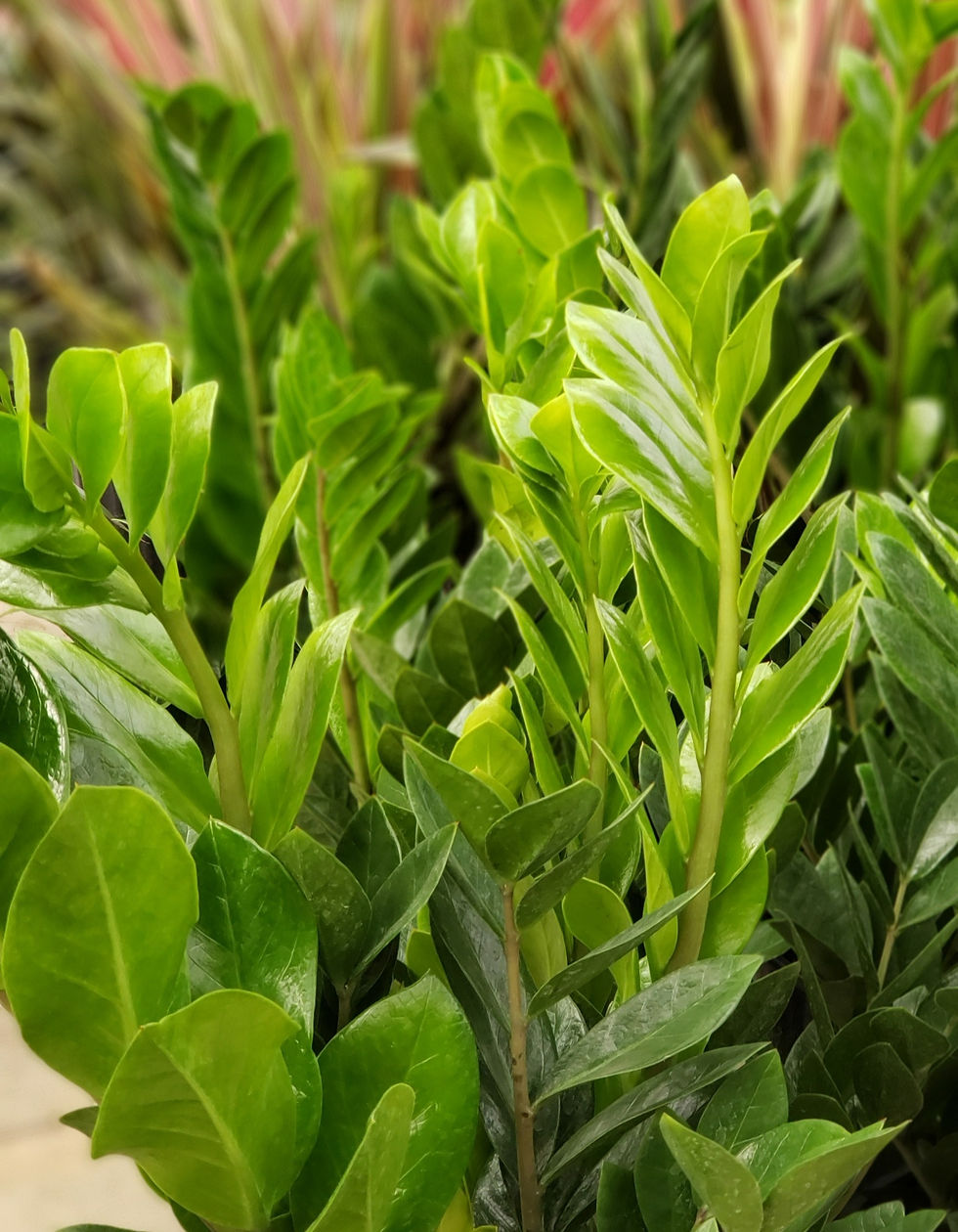Aglaonema Plant Bio: Podcast Ep#59
- Owner: Holly Dz

- May 23, 2022
- 3 min read
This low to medium care houseplant, commonly called Chinese Evergreen, comes in several fun colors and patterns! Since these are fairly common, you should be able to find one to try at almost any garden center and plant shop!
Botanical Name: Aglaonema
Common Name: Chinese Evergreen
Sun Requirements:
The green cultivars of Aglaonema can thrive in low to medium light. The cultivars that have bright colors or white will need to be in medium light otherwise their colors may fade. For the brighter cultivars, an east or west window is a great place to put them. Direct sunlight will cause burning and fading so avoid bright, direct sunlight.
Water Requirement
Aglaonema likes to be kept in medium moisture. I wouldn't recommend letting these completely dry out in-between watering because it can case browning leaves.
Most varieties can grow just fine in low to medium humidity and they do appreciate a little bit of humidity, if possible. This could also help prevent browning around the edges of your leaves as well.
Fertilizer
As I always say, there are LOTS of ways to fertilize plants. Unless you are extremely over-fertilizing your plant, there isn't necessarily a wrong way to do this. I currently use Fox Farm's Grow Big Liquid Fertilizer and I fertilize every 2 weeks when I water my plants, starting around the end of February through October. I honestly probably only fertilize once or twice in winter because the plant isn't as active! I use about 1/2 to 3/4 the recommended amount of fertilizer because I would rather under-fertilize than over-fertilize my plants.
Practical Houseplant Book: "Apply a quarter-strength balanced liquid fertilizer every other month from spring to fall."
There are MANY ways to fertilize and it is completely up to you! There are tons of products out there you can try but an overall rule of thumb for houseplants is that it is best to under-fertilize, rather than over-fertilize. Always use the recommended amount, or less, when applying your fertilizer to houseplants.
Propagation
You can propagate these in a couple different ways! You can divide your Aglaonema, but the Houseplant Survival Manual says only to divide when your plant "becomes quite rootbound." You can also take stem cuttings. I would recommend taking a tip cutting with a few leaves to root because younger, newer growth tends to root better. From their you can root in water or in soil. However, if you choose soil, keep the soil consistently moist.
Other Facts
Part of the Araceae family.
Native to tropical areas of Asia.
Aglaonemas originally stemmed from most all green varieties but have been heavily cultivated over the years. They now come in shades of green, white, pink and red with unique patterns.
These can bloom indoors in the right conditions. Their blooms look very similar to that of a Dieffenbachia.
These plants do have a low tolerance for cold air so keep out of drafting windows or doors. If you move your houseplants outside make sure temperatures don't drop below 60 degrees F just to be safe.
These are toxic plant to pets and humans. Check out Podcast Ep#31 for more info or the corresponding blog post!

WANT TO LISTEN?
Go to Apple Podcasts, Spotify, Stitcher, Google Podcasts, and more! Search for Houseplant Homebody to hear this episode and MANY more! You can also listen directly on my website under the Podcast page!
DON'T FORGET TO FOLLOW!
Stay connected on Instagram, Facebook, and Pinterest @houseplanthomebodyllc.
SAVE, COMMENT, LIKE, FOLLOW, SUBSCRIBE, and SHARE.
All your engagement on my podcasts, blogs, and social media posts help other plant lovers find me too!

Always written with extreme plant passion!
Love, Holly (Owner & Creator of Houseplant Homebody LLC)















Comments